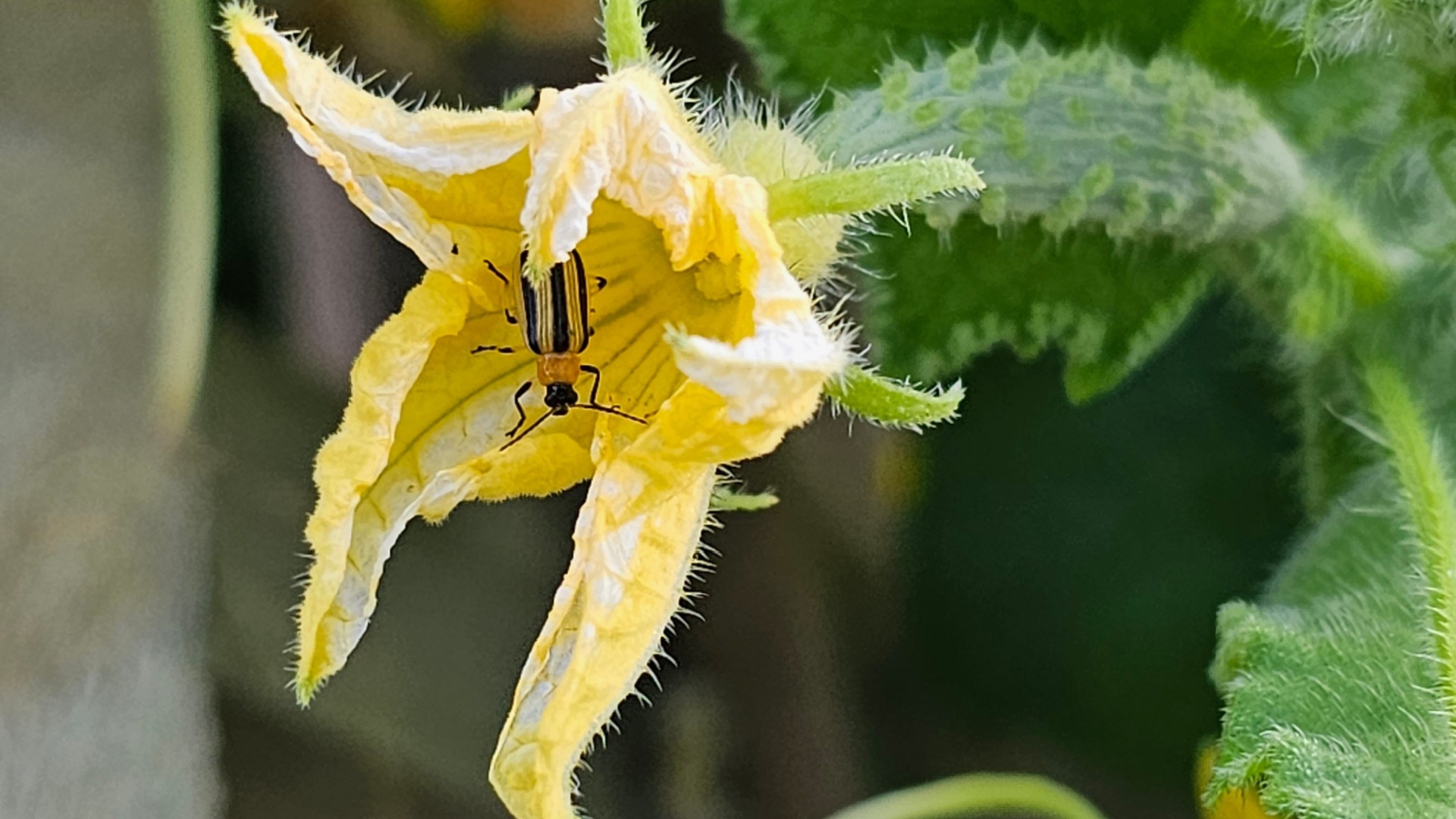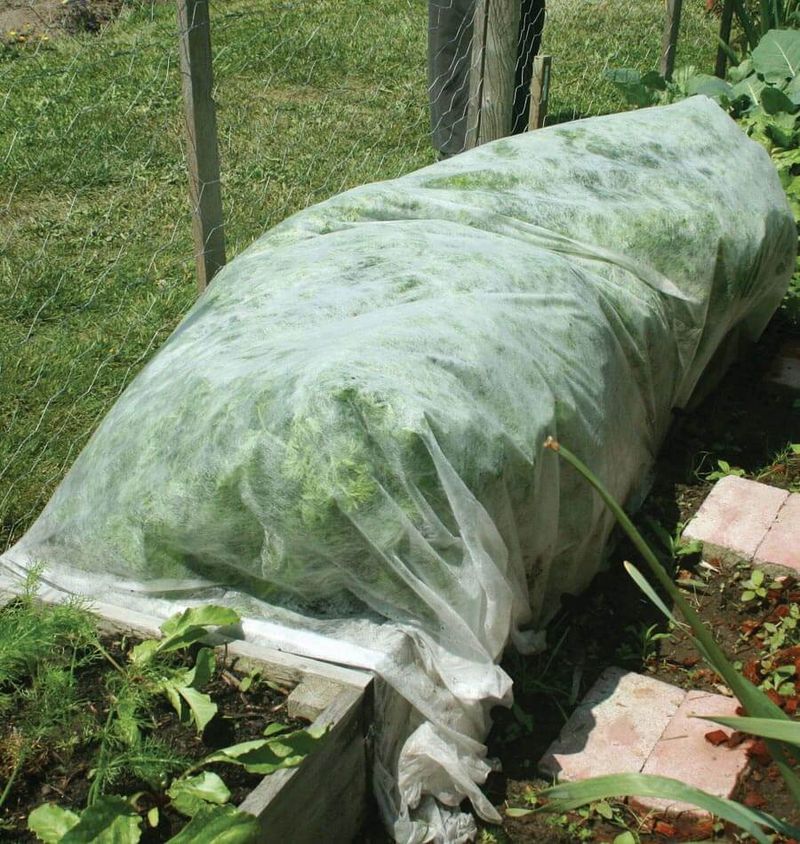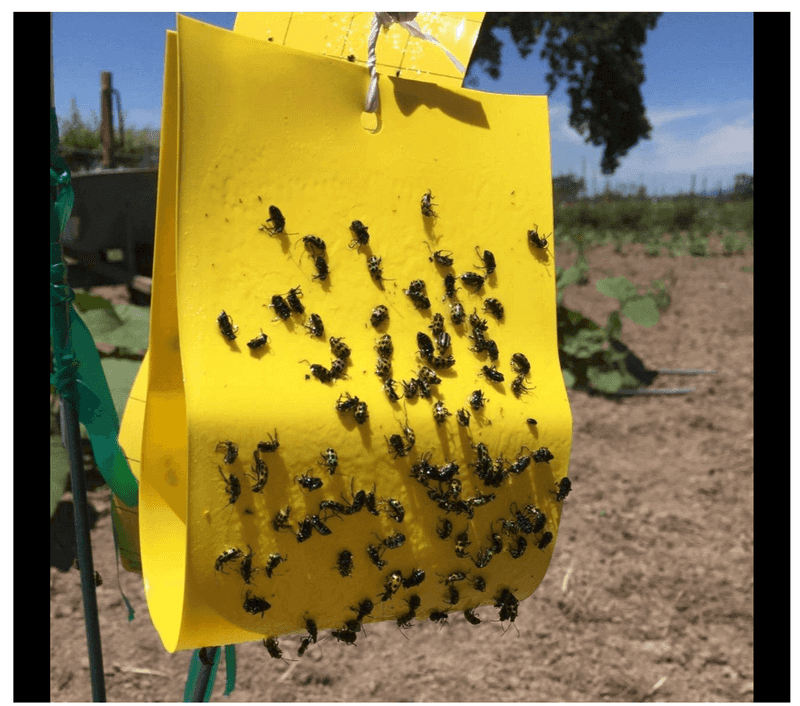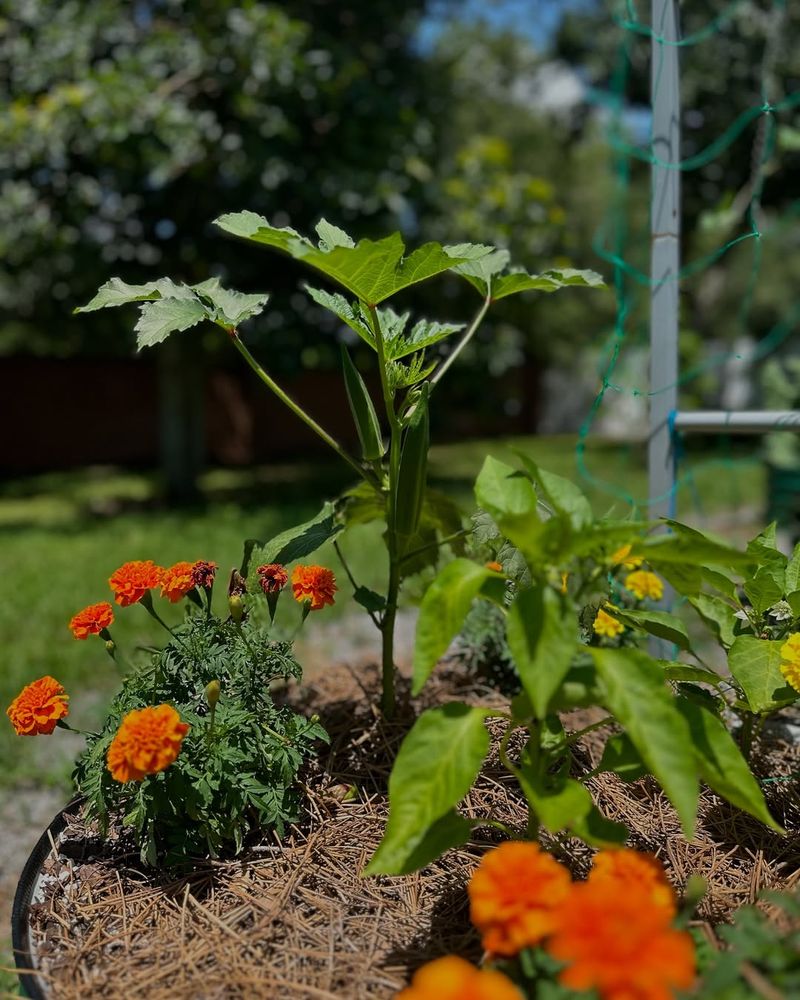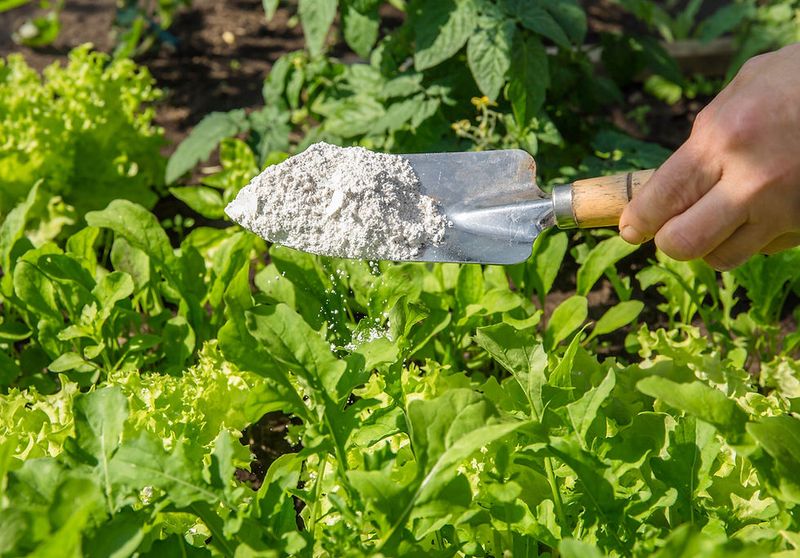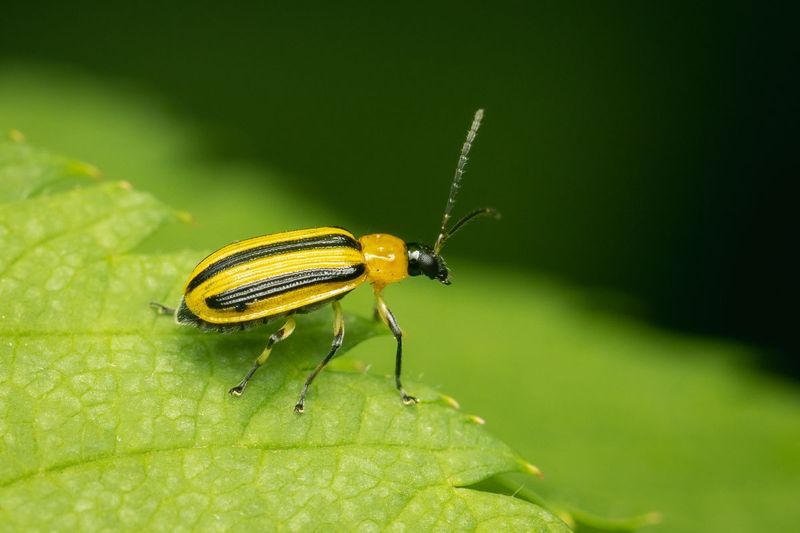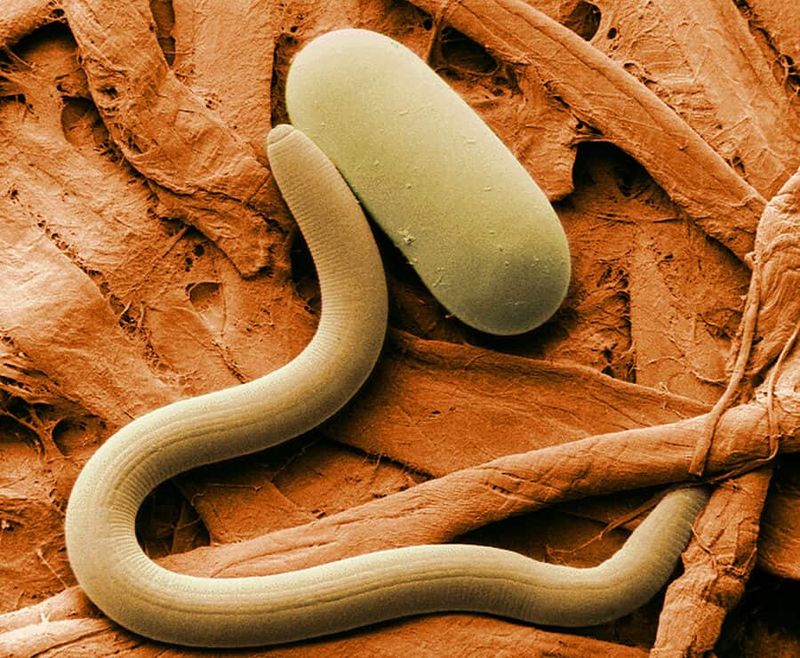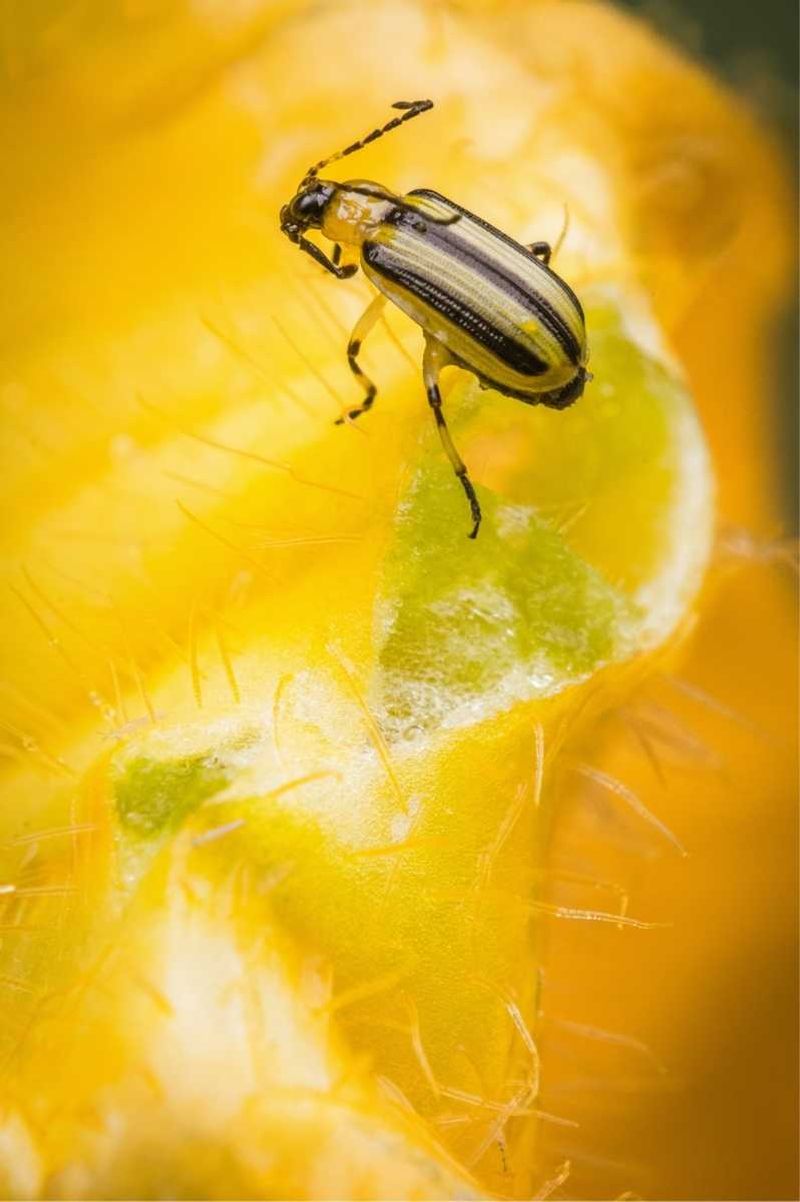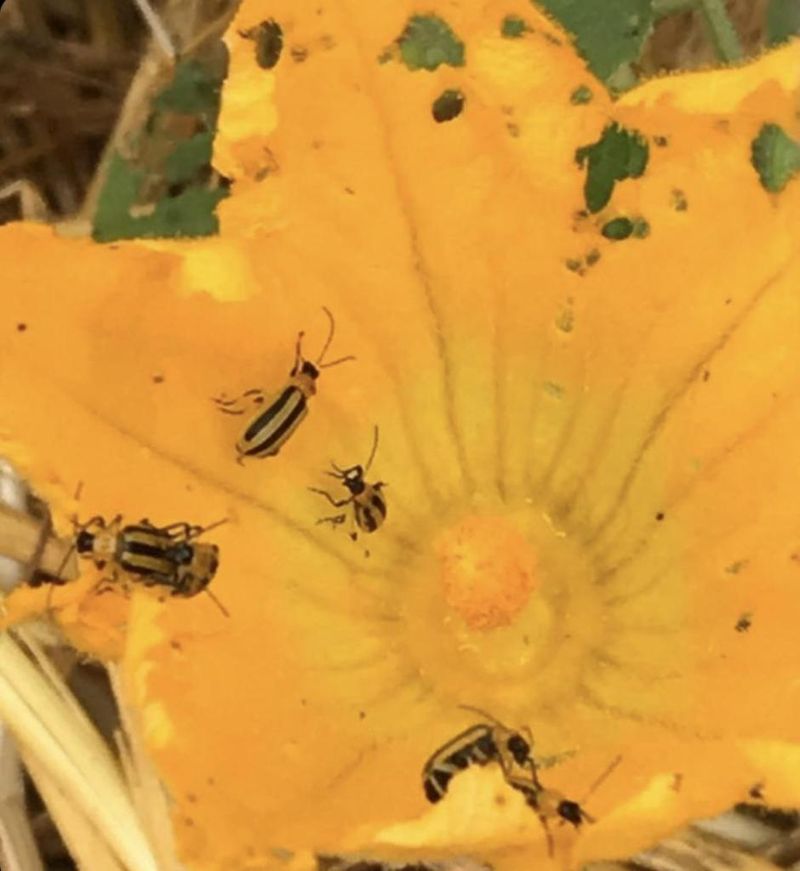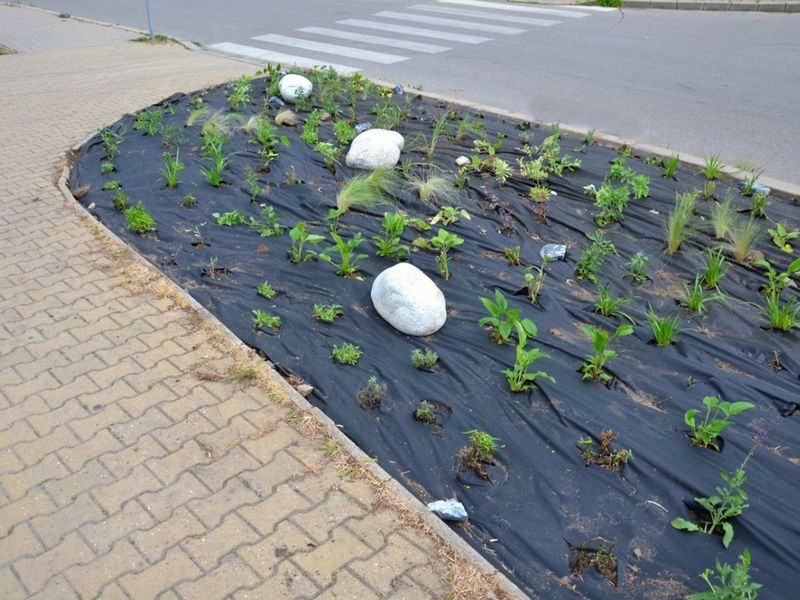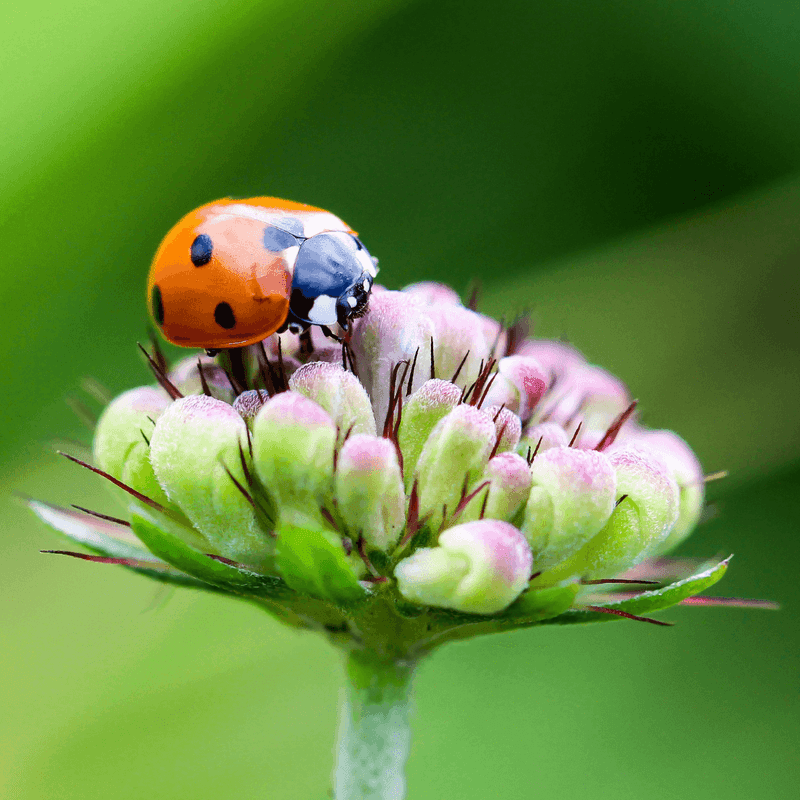Cucumber beetles may be tiny, but they can wreak havoc on your plants fast. Skip the harsh chemicals—there are safer, smarter ways to fight back.
These 13 powerful, non-toxic methods will help you kick cucumber beetles out of your garden for good while keeping your plants healthy and thriving.
1. Row Covers As Physical Barriers
Lightweight fabric row covers create an impenetrable fortress against cucumber beetles while still allowing sunlight, air, and water to reach your precious plants. Simply drape the material over your cucumber plants after planting.
Remember to secure the edges with soil, rocks, or stakes to prevent beetles from sneaking underneath. Remove covers temporarily during flowering so pollinators can do their important work, then replace them afterward for continued protection.
2. Yellow Sticky Traps
Cucumber beetles can’t resist the siren call of bright yellow. Capitalize on this weakness by placing yellow sticky traps throughout your garden. The beetles, drawn like magnets to the color, land on the adhesive surface and become permanently stuck.
Position traps about 6 inches above plants for maximum effectiveness. Replace them when they become crowded with captured insects. A bonus feature? These traps also catch other garden pests like aphids and whiteflies while leaving beneficial insects mostly unharmed.
3. Companion Planting With Marigolds
Marigolds stand as natural bodyguards for your cucumber plants. Their strong scent confuses and repels cucumber beetles, creating an aromatic shield around your vulnerable crops. French marigolds work particularly well for this purpose.
Plant these bright defenders around the perimeter of your cucumber patch or intersperse them between plants. Beyond beetle protection, marigolds’ vibrant orange and yellow blooms attract beneficial insects like ladybugs and lacewings that feast on many garden pests.
4. Diatomaceous Earth Application
Sprinkle this powdery substance made from fossilized algae around your plants to create a deadly barrier for cucumber beetles. The microscopic sharp edges in diatomaceous earth slice through insects’ exoskeletons when they crawl across it, causing them to dehydrate and die.
Apply a thin layer around plant bases after rain or morning dew has dried. Food-grade diatomaceous earth poses no threat to humans or pets but works like microscopic razor blades against soft-bodied pests. Reapply after heavy rain washes it away.
5. Neem Oil Spray
Extracted from neem tree seeds, this natural insecticide disrupts the life cycle of cucumber beetles by interfering with their hormones and ability to feed. Mix 2 teaspoons of neem oil with a few drops of mild dish soap and a quart of water. Spray thoroughly on plants during evening hours to avoid harming beneficial insects that visit during daylight.
The bitter compounds in neem oil make plants taste terrible to beetles without leaving harmful residues on your future harvest. Weekly applications provide ongoing protection during peak beetle season.
6. Kaolin Clay Coating
Transform your cucumber plants into fortress-like structures with kaolin clay spray. This fine, powdery substance creates a protective film that beetles find irritating and confusing, causing them to seek easier meals elsewhere.
Mix kaolin clay powder with water according to package directions and spray plants until they appear whitish. The clay barrier physically prevents beetles from feeding while still allowing plants to photosynthesize. Gardeners report significantly reduced damage in plants treated with this mineral-based deterrent.
7. Beneficial Nematodes Introduction
Unleash microscopic guardians into your soil with beneficial nematodes. These tiny roundworms hunt down cucumber beetle larvae that live underground, entering their bodies and releasing bacteria that kill them from within. Apply nematodes to moist soil in spring when soil temperatures reach 60°F.
Water immediately after application to help them move into the soil. Since cucumber beetles spend part of their life cycle underground, this approach targets the next generation before they emerge to damage plants.
8. Garlic and Hot Pepper Spray
Create a spicy beetle repellent by blending 4 garlic cloves and 2 hot peppers with 2 cups of water. Strain the mixture and add a tablespoon of dish soap to help it stick to plant surfaces. The powerful compounds in garlic and peppers irritate cucumber beetles’ sensitive receptors, driving them away from treated plants.
Apply in early morning or evening every 7-10 days during peak beetle season. Keep this spray away from your eyes and wash hands thoroughly after handling – what repels beetles can also irritate human skin!
9. Trap Crops Strategy
Plant early maturing varieties of squash or cucumbers around your main crop to serve as sacrificial decoys. Cucumber beetles will flock to these trap crops first, allowing you to concentrate your pest management efforts there instead of across your entire garden.
Blue Hubbard squash works exceptionally well as a trap crop. Once beetles gather on trap plants, remove and dispose of heavily infested plants in sealed bags. This clever strategy reduces beetle pressure on your primary cucumber crop while minimizing the overall pest population.
10. Hand-Picking Method
Sometimes the simplest approach works wonders. Visit your garden early in the morning when cucumber beetles are sluggish and less likely to fly away. Wear gloves and carry a bucket of soapy water for beetle disposal.
Gently shake plants over the bucket to dislodge beetles or pick them off by hand when you spot them. Drop captured beetles into the soapy water where they cannot escape. Consistent daily picking significantly reduces beetle populations and gives plants a fighting chance against these persistent pests.
11. Crop Rotation Practice
Outsmart cucumber beetles by changing where you plant cucurbits each season. Since these pests overwinter in garden soil near previous host plants, moving cucumber family crops to new locations disrupts their life cycle.
Maintain a three-year rotation schedule, keeping detailed garden maps to track planting locations. The distance between current and previous cucumber plantings should be as great as your garden allows. This simple planning strategy reduces beetle populations by forcing newly emerged adults to search farther for food.
12. Reflective Mulch Barriers
Aluminum foil or reflective plastic mulch creates a disorienting light show that confuses and repels cucumber beetles. The reflected light interferes with their ability to locate host plants, causing them to fly elsewhere. Lay reflective mulch on soil before planting, then cut holes for transplants.
Secure edges with soil to prevent wind from lifting the material. Beyond beetle deterrence, reflective mulch increases photosynthesis by bouncing light onto leaf undersides and warms soil earlier in spring for faster plant growth.
13. Predatory Insects Attraction
Transform your garden into a battlefield where nature’s hunters keep cucumber beetles in check. Soldier beetles, lacewings, and ladybugs all feast on cucumber beetle eggs and larvae, providing free pest control services. Plant flowers like alyssum, cosmos, and dill to attract these beneficial predators.
Avoid broad-spectrum insecticides that kill helpers along with pests. A shallow dish of water with stones provides drinking stations for beneficial insects during hot weather, encouraging them to stay and patrol your cucumber patch.

